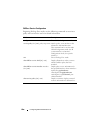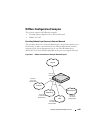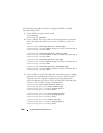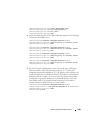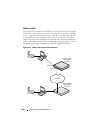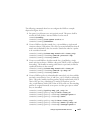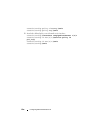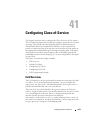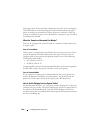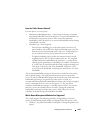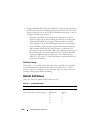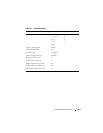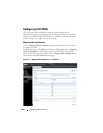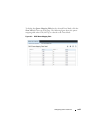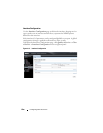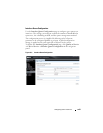
1314 Configuring Class-of-Service
Each ingress port on the switch has a default priority value (set by configuring
VLAN Port Priority in the Switching sub-menu) that determines the egress
queue its traffic gets forwarded to. Packets that arrive without a VLAN user
priority, or packets from ports you’ve identified as “untrusted,” get forwarded
according to this default.
What Are Trusted and Untrusted Port Modes?
Ports can be configured in “trusted” mode or “untrusted” mode with respect
to ingress traffic.
Ports in Trusted Mode
When a port is configured in trusted mode, the system accepts at face value a
priority designation encoded within packets arriving on the port. You can
configure ports to trust priority designations based on one of the following
fields in the packet header:
• 802.1 Priority: values 0–7
• IP DSCP: values 0–63
A mapping table associates the designated field values in the incoming packet
headers with a traffic class priority (actually a CoS traffic queue).
Ports in Untrusted Mode
If you configure an ingress port in untrusted mode, the system ignores any
priority designations encoded in incoming packets, and instead sends the
packets to a traffic queue based on the ingress port’s default priority.
How Is Traffic Shaping Used on Egress Traffic?
For unit/slot/port interfaces, you can specify a traffic shaping rate for the port
(in Kbps) for egress traffic. The traffic shaping rate specifies an upper limit of
the transmission bandwidth used. Once the traffic shaping rate has been
reached, frames that exceeded the limit remain queued for transmission until
the next scheduling slot.



